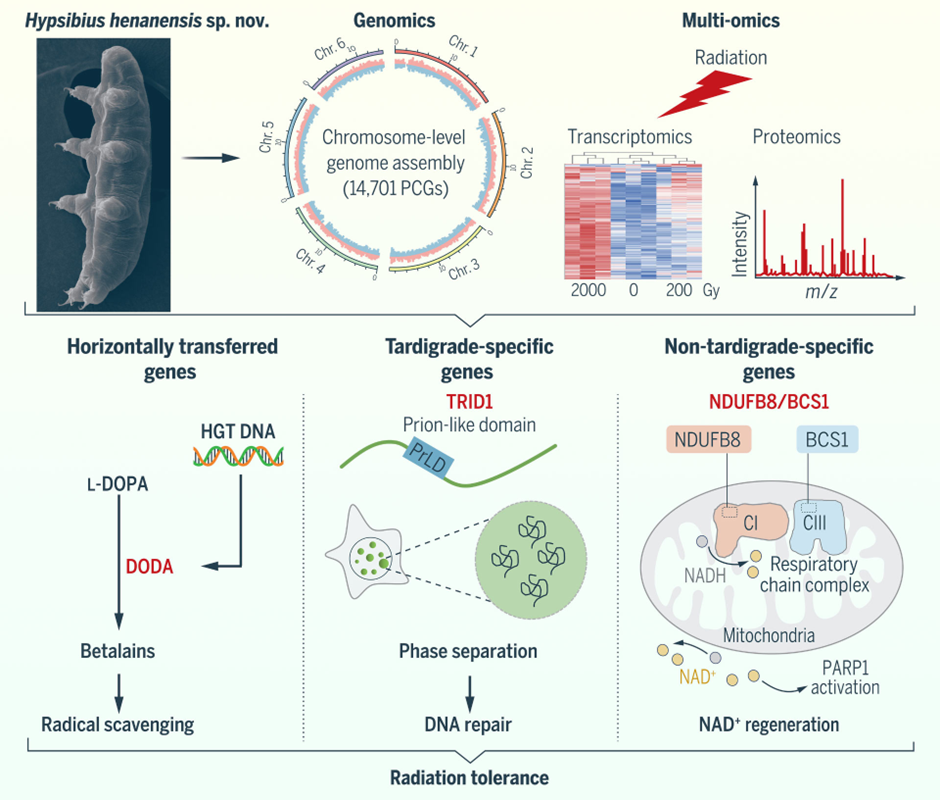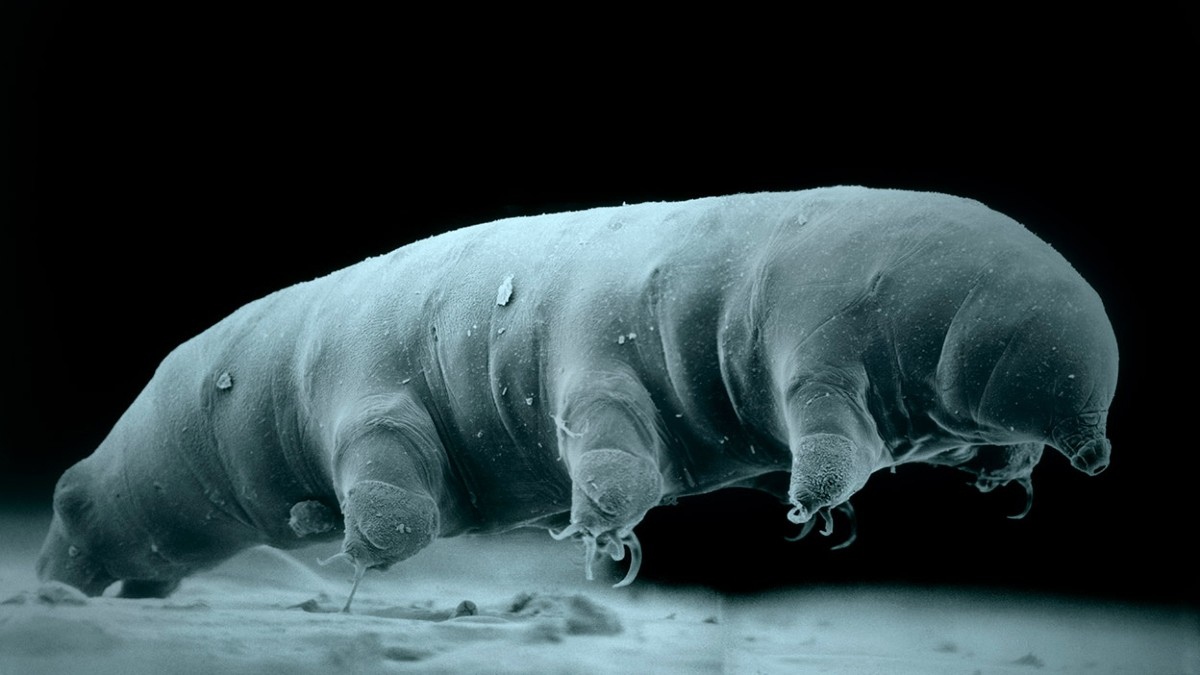- Courses
- GS Full Course 1 Year
- GS Full Course 2 Year
- GS Full Course 3 Year
- GS Full Course Till Selection
- Online Program
- GS Recorded Course
- NCERT (Recorded 500+ Hours)
- Polity Recorded Course
- Geography Recorded Course
- Economy Recorded Course
- AMAC Recorded Course
- Modern India, Post Independence & World History
- Environment Recoded Course
- Governance Recoded Course
- Science & Tech. Recoded Course
- International Relations and Internal Security Recorded Course
- Disaster Management Module Course
- Ethics Recoded Course
- Essay Recoded Course
- Current Affairs Recoded Course
- CSAT
- 5 LAYERED ARJUNA Mentorship
- Public Administration Optional
- ABOUT US
- OUR TOPPERS
- TEST SERIES
- FREE STUDY MATERIAL
- VIDEOS
- CONTACT US
How a Tardigrade Resists High Levels of Radiation: Implications for Humans
How a Tardigrade Resists High Levels of Radiation: Implications for Humans

- In October 2024, A group of scientists discovered how a newly identified species of tardigrades (Hypsibius henanensis) can survive extremely high levels of radiation.
- Their research shows that specific genes in the tardigrades help protect their DNA from damage and repair it when exposed to radiation.
- This discovery could have important uses in areas like space travel, nuclear waste cleanup, and cancer treatment.
- The study was published in the journal Science and provides insight into how organisms can survive extreme conditions, including high radiation levels.
What are Tardigrades?
- Tardigrades, also known as water bears or moss piglets, are tiny, microscopic creatures famous for their ability to survive in some of the harshest conditions on Earth.
- They can handle extreme temperatures, complete dehydration, and very high radiation.
- Scientists have long been curious about how they manage to survive these challenges by entering a state of suspended animation, which allows them to "pause" their life processes until conditions improve.
The Discovery of Hypsibius henanensis:

- In 2018, scientists discovered a new species of tardigrade called Hypsibius henanensis.
- They found it in moss samples collected from Funiu Mountain in Henan Province, China.
- Genome Study: The researchers sequenced the genome (the complete set of genes) of this new species.
- They found it contained 14,701 genes, 30% of which were unique to tardigrades.
- This helped them to understand how the species survives extreme conditions like high radiation.
How Was the Study Conducted?
- Sample Collection: The researchers gathered moss samples from Funiu Mountain, where they found the new species of tardigrade.
- Genome Sequencing: They sequenced the genome (the genetic makeup) of the tardigrade, analyzing thousands of genes, proteins, and RNA molecules.
- Radiation Exposure: The scientists exposed the tardigrades to gamma radiation, which is much stronger than what humans can survive.
- They then observed how the genes of the tardigrade responded to this radiation.
Key Findings of the Study
The study found 3 main ways that Hypsibius henanensis is able to survive high radiation:
- Rapid DNA Repair:
- TRID1 Protein: One of the most important findings was the discovery of a protein called TRID1.
- This protein helps the tardigrade repair damage to its DNA caused by radiation.
- DNA damage, especially double-strand breaks, can be fatal to cells, but the tardigrades can fix this damage quickly.
- Activation of Mitochondrial Genes:
- When exposed to radiation, the tardigrades activated genes that produce proteins needed for mitochondria.
- Mitochondria are the energy powerhouses in cells, and these proteins help not only produce energy but also help with repairing DNA.
- This gives the tardigrades extra protection against radiation damage.
- Production of Antioxidant Pigments (Betalains):
- The tardigrades also produce betalains, which are antioxidant pigments.
- These pigments help neutralize harmful chemicals, called reactive oxygen species, which are created by radiation and can damage cells.
- By producing these pigments, the tardigrades protect themselves from the harmful effects of radiation.
- Betalains Improve Human Cell Survival:
- When the researchers tested one of the betalains from the tardigrades on human cells, they found that it helped human cells survive better after radiation exposure.
- This could mean that these pigments may one day be used to improve radiation therapy for cancer patients, helping protect healthy cells while targeting cancer cells.
Implications for Humans
The discovery of how tardigrades resist radiation could lead to several important benefits for humans:
- Space Exploration:
- One of the major concerns for astronauts is the high levels of radiation in space, which can damage their cells and DNA.
- Since tardigrades can survive extreme radiation, understanding how they do this might help scientists find ways to protect astronauts on long space missions, particularly those going beyond Earth's protective atmosphere.
- Nuclear Waste Cleanup:
- The ability of tardigrades to withstand radiation could also help in the cleanup of nuclear waste.
- If scientists can learn how to make other organisms resistant to radiation, it might be possible to use them to safely clean up areas contaminated by nuclear pollution.
- Cancer Treatment:
- Radiation therapy is a common treatment for cancer, but it can also harm healthy cells.
- The study shows that tardigrades have a special ability to repair DNA and survive radiation.
- If we can learn from these creatures, we might be able to develop better radiation protection for cancer patients, improving their recovery and reducing damage to healthy cells.
- Improved Stress Resistance in Human Cells:
- Beyond radiation, the research might help us improve how human cells resist other forms of stress, like toxins or extreme heat.
- This could help in aging research and in regenerative medicine, where the goal is to heal or replace damaged tissues.
Conclusion
Tardigrades, particularly Hypsibius henanensis, have evolved remarkable ways to survive high radiation, including fast DNA repair, activation of mitochondrial proteins, and production of antioxidant pigments. These discoveries could help us develop new technologies to protect humans from radiation, both in space and on Earth. By studying how these tiny creatures survive such extreme conditions, we could improve cancer treatments, make space exploration safer, and even assist in nuclear waste cleanup. The lessons we learn from tardigrades could provide new solutions to some of humanity's biggest challenges.




